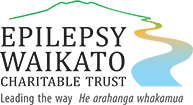by Stephanie Hunter Safety while cooking The kitchen, with its ovens, burners, and sharp knives is a potentially hazardous area. Adjustments in methods of food preparation, cooking, and clean-up will make the kitchen safer for people with seizures. For example, some people with occasional complex partial seizures choose to complete all their food preparation with food processors and choppers instead of knives, or purchase pre-cut
Read More »Kieran’s Poem

Meet Kieran. Kieran has epilepsy and is also a keen soccer player. He has written two poems to share with you all. Thank you Kieran. Epilepsy is not that bad, It will not make you sad, Do not think of this thing as hate, Treat it like it’s your best mate. Epilepsy is quite cool, It will make you not a fool, Do not go
Read More »First aid posters for seizures
Children’s first aid poster for tonic clonic seizures:(Click image to download a printer friendly version) First aid poster for tonic clonic seizures:(Click image to download a printer friendly version) First aid poster for focal impaired awareness seizures: (Click image to download a printer friendly version)
Read More »Risk Management Planning for Teachers
Epilepsy is a complex condition with many different types of seizures possible. Each individual responds differently to the condition and so it is not possible to provide specific risk management guidelines applicable to all children within a school. Each school therefore needs to develop a series of risk management plans that are suitable for individual children with epilepsy, i.e. each child will likely need to
Read More »Driving and Epilepsy
Driving requires a complex array of neurological functions and skills that involve vision, thinking, attention and judgement, co-ordination, reaction time and motor control. Any of these can be impaired by epilepsy and seizures. People who drive vehicles may present safety concerns for themselves, their passengers and the public. Despite having epilepsy, many people are still able to drive and hold a driver’s licence, but conditions
Read More »Be Empowered
When a person is newly diagnosed with epilepsy there is an adjustment period. Questions are asked, “Why me?”, and a whole range of emotions can be displayed from denial, sadness, grief, or anger. These in turn can affect self-esteem: a person can become fearful of his/her condition, anxious, embarrassed, or even angry. Relationships can suffer, employment potential can be compromised and a person’s ability to
Read More »Safety in the Home
Keeping Safe – Living with Epilepsy The home is the most common place for seizure-related accidents, followed by street and workplace accidents. The following information is designed to help identify the most appropriate safety measures for you. In the bedroom Have a low bed Don’t place the bed against the wall or near other furniture Place protective cushions around the bed Pad sharp-edged furniture Use
Read More »My seizure diary
A seizure diary is an important tool to manage, record and keep track of seizures and epilepsy. It can be used to keep track of medications, side effects, seizure frequency and for help in identifying potential triggers. We worked a number of our clients to develop an easy to use and in depth seizure diary. Please contact Esther if you would like to receive a free
Read More »Epilepsy Medication
Epilepsy seizures can be controlled (but not cured) by the use of anti-epileptic drugs (AEDs). Around 70% of people become seizure-free, or have the number of their seizures decreased, with AED use. Most people find the right AED fairly quickly once newly diagnosed. These drugs calm the over-excited brain cells by affecting the levels of ‘neurotransmitter’ chemicals in the brain. They do not work at
Read More »